This post may contain affiliate links. By clicking and making a purchase through the links, I earn a small commission at no extra cost to you. See my disclaimer for more information. This and display ads allow me to keep the site up to date and give back.
Looking for digital nomad tips? Let me help you! I’ve been living as a digital nomad for the last five years and have learned a thing or two I wish I knew when I was starting out.
Being a digital nomad is an increasingly popular lifestyle choice these days, given that it’s never been easier to find remote work. Many employers actually encourage their employees to travel while working remotely! Who would have thought?
But is it as easy as throwing your laptop in a bag and buying a one-way flight? Well.. there are some things to consider.
I have faced many challenges in my journey, and am sharing my best digital nomad lifestyle tips in this guide to help you get started.
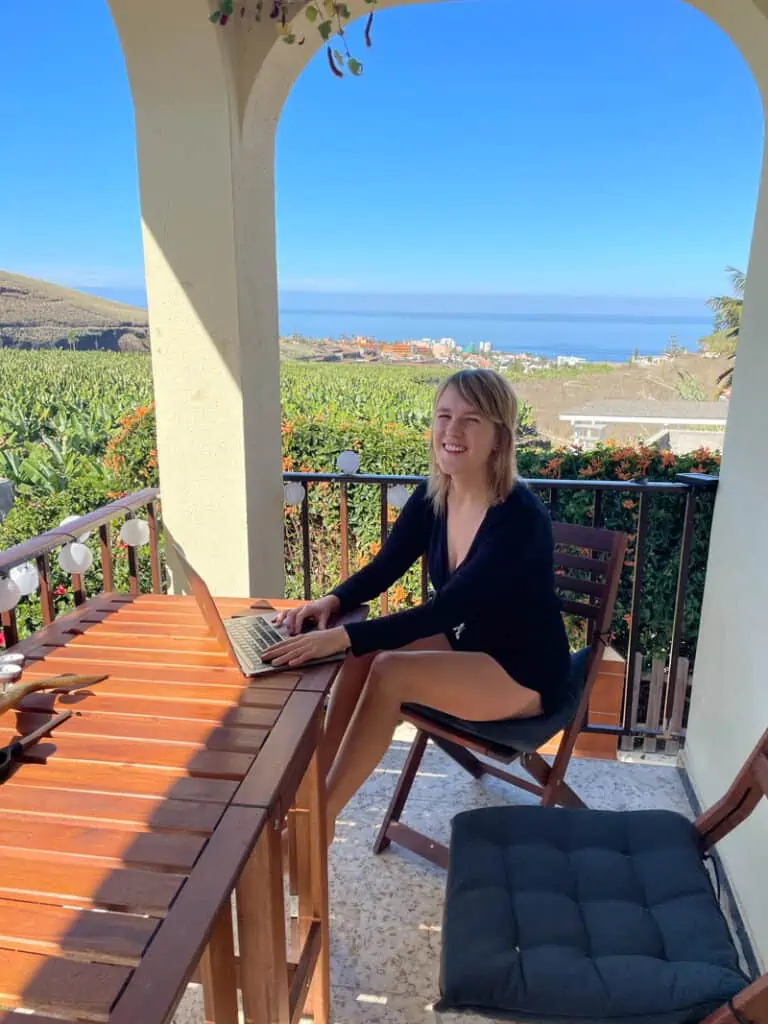
Digital nomad tips and tricks
1. Determine your why
In order to make something happen, our brains need to understand why we are doing it.
Without a good reason, it’s likely we won’t feel motivated to make our goals happen.
I wanted to become a digital nomad because it would give me the freedom to travel and explore the world without an end date.
Is your goal to escape the 9-5? Travel the world? Search for a soulmate across the world?
Today, think about why you want to become a digital nomad and write it down.
- What do you hope to gain from being a digital nomad?
- What kind of work do you want to do?
- What kind of lifestyle do you want to have?
Your intentions will set the next steps to becoming a digital nomad.
To inspire your thoughts, check out some of these books for digital nomads.
2. Figure out how you will make money online

The next thing you’re going to need is to figure out how you’re going to make money online.
If you already have a remote job that you’re happy with, then ask your employer if you can work remotely from different countries.
Most employers have become much more flexible in the last few years, and hopefully, they say yes. But if not, you need to find another remote job or create your own source of income.
Look for remote work on websites like DynamiteJobs, FlexJobs, and Remote.co.
If you don’t yet have the skillset for the digital nomad jobs you want, then start taking courses to develop them.
Whether you want to become a travel blogger, freelance writer, virtual assistant, or graphic designer, you can teach yourself all of this online for a low cost. You do not need to go back to university.
These are some of the best digital nomad jobs for traveling.
Many digital nomads choose to become self-employed. This is what I did, and it was the best decision I ever made.
I actually make more money now as a travel blogger than I did working for the Canadian government, and there’s no limit to my earning potential. Plus, it gives you the ultimate flexibility to create your own work schedule.
Consider your digital nomad skills, experience, and goals when deciding whether working for others or being a freelancer is for you. If you’re someone who doesn’t deal well with uncertainty, you may not deal well with the solopreneur life.
3. If you’re starting a business, move somewhere cheap
If you are starting your own business and have some money saved up, one of the best digital nomad tips is to move to a cheaper destination than where you currently live while you’re getting your business off the ground.
Try to live in a cheap digital nomad destination, like Chiang Mai or Da Nang in Southeast Asia or Bansko in Bulgaria. This will minimize your living expenses and will give you more time to build up your business. These places also have great communities of entrepreneurs that you can learn and grow with.
I don’t recommend leaving to travel without a plan to make money because it’s going to stress you out knowing your bank account has an expiration date.
I traveled for a year burning through my savings, and wish I had just slowed down and focused on building my business while traveling.
4. Go somewhere with an established community
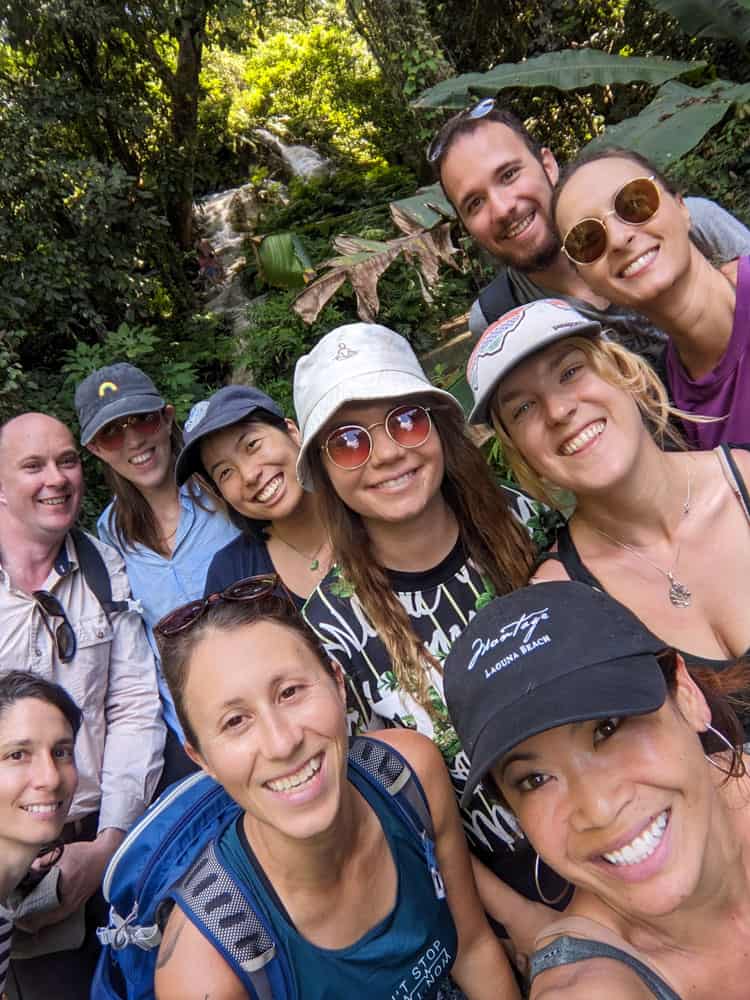
Even if you’re making enough money to live anywhere in the world, it’s important to choose different locations where you’ll be able to find communities.
Community is everything in this lifestyle and can make or break your success. If you’re just starting off, it may be a good idea to pick a destination with a big nomad community so you can start building your network of nomadic friends and meet like-minded people.
Here are some of my top choices for first-time digital nomads:
- Chiang Mai, Thailand
- Bali, Indonesia
- Lisbon, Portugal
- Puerto Vallarta, Mexico
- Tenerife, Spain
- Mexico City
5. Consider time zones
As a digital nomad, you may find yourself working with clients, colleagues, or teams located in different time zones. If you need to interact with a team whose mainly in one time zone, you may want to consider choosing a destination that’s on a similar time.
I’ve met people living in Bali who were working remotely from Canada… which meant they worked through the night. Another girl I lived with in Costa Rica used to get up at 4 am to be on UK time. I don’t think that’s worth it but to each their own.
Communicate with your clients or team members to establish a mutually convenient schedule. Find overlapping hours where you can collaborate, have meetings, or address urgent matters in real-time.
Tools like World Time Buddy, Time Zone Converter, or even the built-in features in calendar apps can be immensely helpful in scheduling meetings and managing time differences.
6. Know the visa rules
While it’s a lovely idea to pack up and move to a new country, most of them have time requirements on how long you can actually be there.
When it comes to digital nomad tips, it’s crucial to consider visa requirements. As an example, for many countries in Europe, you can only stay for 90 days within a 180-day period. And starting in 2025, you will be required to have an ETIAS visa waiver.
If you want to stay longer in a place, take advantage of the rise in digital nomad visas, which provide legal permission to live and work in a country for an extended period.
7. Invest in quality gear
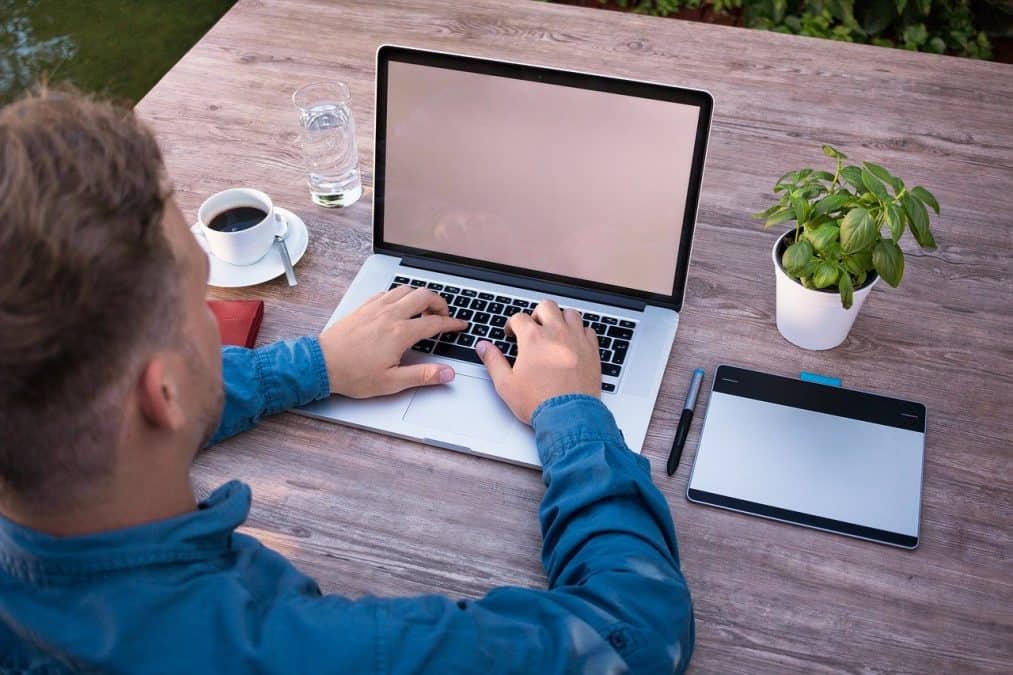
You want software and hardware that won’t break on you. Read reviews and invest in reliable tech. A laptop for remote work is what you’ll need most, and I’m team Apple all the way.
Since I do a lot of video and photo editing, I went with the Macbook Pro and have no complaints. Some other tools you may find helpful:
Laptop stand – it took me years to get one of these, and I deeply regret it. It’s so affordable and makes a huge difference for my back having my laptop just slightly perched up.
International plug adapter. A must-have if you’re moving between continents to ensure you keep your electronics charged. I like this one because it has four USB ports, so you can charge multiple devices at the same time.
Portable power bank – because there’s nothing worse than being stuck somewhere with a dead mobile phone.
External hard drive – a must if your job requires large file sizes or you want to store photos/videos from your trip. I like this hard drive because it’s shockproof, so if it gets dropped, your data is still safe.
Portable WiFi router – having consistently good WiFi can be a struggle as a digital nomad. This portable WiFi router allows you to strengthen the connection of WiFi networks to the room you’re in.
You’ll also want a quality backpack or suitcase to put all this in – check out this post on the best luggage for digital nomads for more travel tips.
Prior to leaving your home base, test your remote work setup to ensure a smooth transition.
8. Give yourself a deadline to leave
After you’ve decided on your destination to travel and got all the gear you need, give yourself a deadline.
There will never be a “perfect” time to go – there will always be reasons why it feels like you can’t leave. Still, it’s important to give yourself a firm date and commit to it.
Once you do, start telling people you’re leaving. This may not be easy, but you need to do everything to make yourself accountable.
You can also set price alerts for flights so you can find the best deal. I use Skyscanner and Google Flights for this.
9. Embrace minimalism and pack light
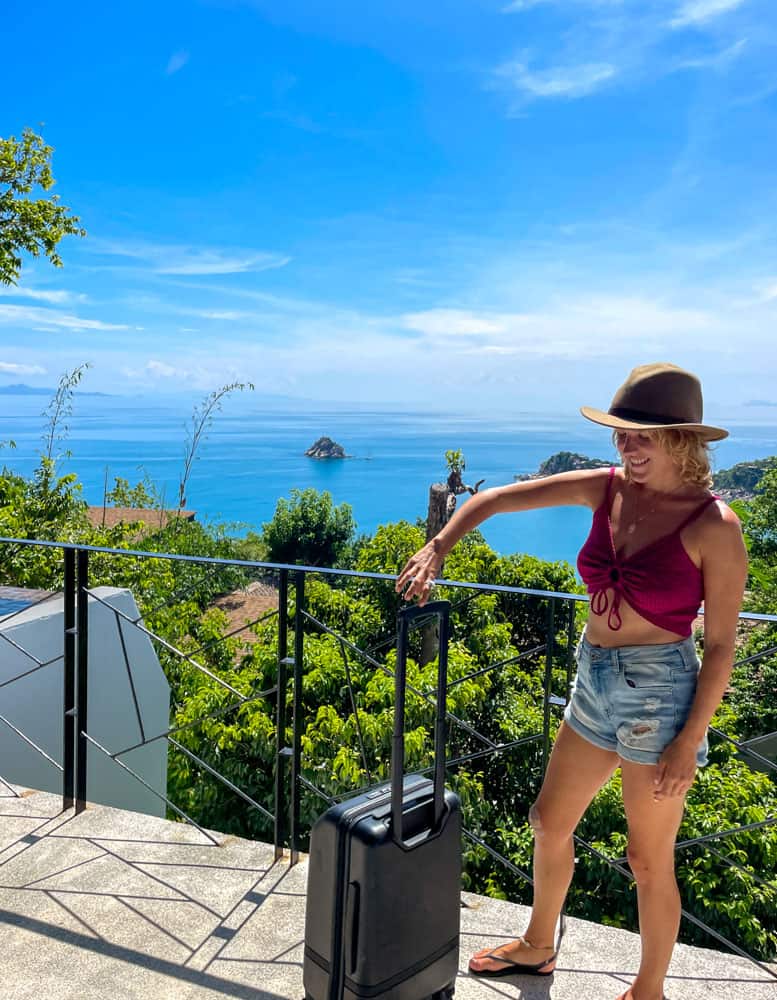
I recommend getting rid of as much as possible unless you only plan to be gone for a short period.
As you embark on the nomadic lifestyle, you will undoubtedly become a minimalist. There’s nothing like living out of a bag to make you realize how much you don’t need material items.
Plus, storing stuff cost money unless you have a nice relative or friends. Instead, sell what you can and use the money to buy a shiny new plane ticket. Digitalize any important documents or things you want to bring.
Traveling frequently requires packing efficiently. Adopt a minimalist approach and pack only the essentials.
A lightweight backpack designed for digital nomads will make your journeys more comfortable and hassle-free.
The Nomatic Carry-on Classic is the bag I use, designed with a nomadic lifestyle in mind.
10. Plan Ahead for internet
In order to work remotely, you’ll need a reliable internet connection. Research internet options in your chosen destinations and ensure you have a backup plan in case of connectivity issues, such as a local sim or eSIM.
Coworking spaces, cafes, and accommodations with positive reviews are good places to look for good internet.
Another tool worth investing in is a Wi-Fi Extender. Often hotels and hostels will have Wi-Fi that works well in the main common area but not anywhere else. By using a Wi-Fi extender, you can pick up the signal in your room.
11. Secure your belongings
You don’t want your devices to get stolen or your online information hacked. These digital nomad tips will help prevent that.
Putting a padlock on your luggage or investing in a secure backpack such as Pacsafe is one way to protect yourself from thieves. Always lock your belongings away while heading out for the day, whether it’s a locker or a hotel safe.
You should also invest in a VPN (Virtual Private Network) to help secure your connection. Many Wi-Fi networks aren’t secure (especially in public places like coffee shops), but they can be by using a VPN service.
VPNs work by encrypting your computer traffic and routing it through anonymous routers, hiding your identity. As a bonus, they also allow you to access Netflix videos from anywhere in the world!
This is the VPN I use, and it’s worked flawlessly for me.
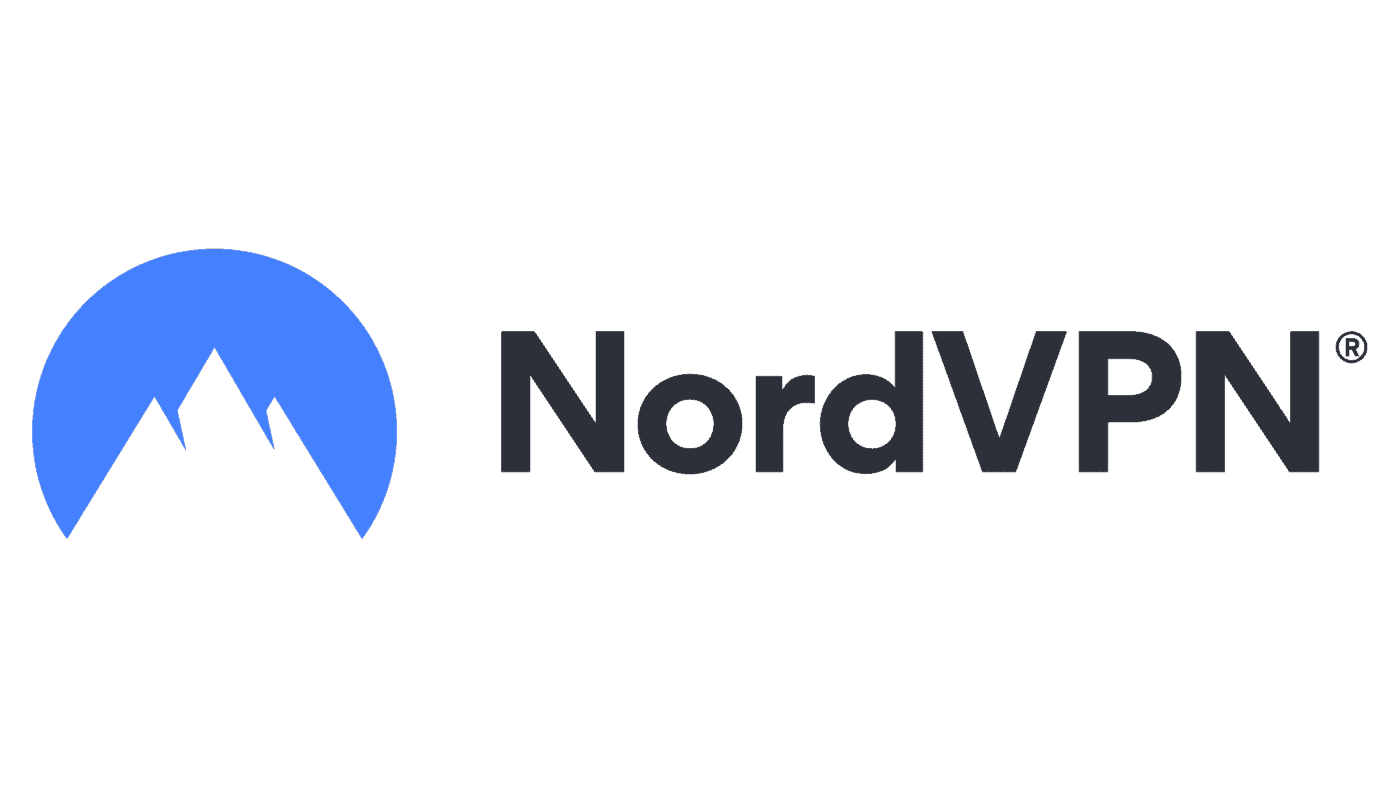
BEST VPN FOR DIGITAL NOMADS
NordVPN is the VPN I use and love! It is the fastest VPN provider with a reputation for providing powerful military-grade encryption.

12. Get noise-canceling headphones
This is something I wish I had done from the beginning. Noise-canceling headphones make a world of difference – especially if you travel often.
They block out distractions and create a conducive work environment, allowing you to concentrate better. I use and love Bose QC 35 II which are perfect for working in busy environments such as co-working spaces and planes – they even block out screaming children!
13. Back up your data and documents
Protect your important files and documents by regularly backing them up to secure cloud storage or external hard drives. This precaution will provide peace of mind and protect against data loss.
I use this external hard drive because it’s small and shockproof, so even if it gets dropped, your data is safe.
14. Get credit cards that help you travel for free

One of the best digital nomad tips is to get a travel credit card that combines no foreign transaction fees, rewards points, and insurance coverage.
Many credit cards also allow you to earn rewards points on your expenses, including travel and accommodations, which can be redeemed for flights or hotel stays. But the best way to earn points is through sign-up bonuses!
If you are a Canadian or American and a bit strategic, you can actually get most of your flights for free by “travel hacking,” which is something that has saved me thousands of dollars.
Plus, by choosing a card without foreign fees, you can avoid unnecessary charges when making international purchases.
Additionally, many credit cards have travel insurance and purchase protection, which adds a layer of security.
Selecting the right credit card can save you money, offer rewards, and provide valuable protection while traveling as a digital nomad.
15. Utilize eSIMs to stay connected easily
eSIMs offer convenience and flexibility by allowing you to switch between different mobile networks without physical SIM card changes. I only started using eSIMs last year, and they have been a game-changer!
They provide cost savings through affordable data plans and are simple to set up via mobile apps or websites. There are a number of eSIM providers for digital nomads, but I’m a big fan of Airalo.
With eSIMs, you can easily manage your data usage, enjoy global coverage, and stay connected without relying on physical SIM cards or unreliable Wi-Fi networks.
16. Understand the travel work-life balance

Getting the right balance of travel and work is crucial to your success as a digital nomad. Your main priority may be to see the world, but you need to be sure that you’re getting in the work hours and making an income so that you can afford to travel.
Be prepared to spend a day or two sitting inside so that you can then spend a couple of days freely exploring.
Part of the benefit of being a digital nomad is that you can choose when to take time off. In many cities, the best places to explore can be busiest on the weekends yet are quiet mid-week. By scheduling your “weekend” for the middle of the week, you can avoid the tourist crowds.
Establish a routine and set boundaries between work and personal life. Create a dedicated workspace, define working hours, and develop effective time management strategies to stay focused.
17. Figure out what makes you most productive

It can become easy to procrastinate when there’s no one watching over your shoulder, so you’ll need to develop a schedule that works for you. For some, that might mean waking up at the crack of dawn and working until noon.
While for others, it might be working dedicated chunks of time throughout the day. Figure out what works best for you, and go with that!
There are also several productivity hacks you can learn to help work more efficiently. Here are two that work well for me:
Pomodoro Technique. I discovered this a few years ago, and it has helped me so much. You work in dedicated chunks of time and take short breaks in between.
The recommended time is 25 minutes, followed by a five-minute break. Then, after six cycles of 25 minutes, you take a half-hour break and repeat the cycle.
The key is to only focus on one task during those 25 minutes. Put away your phone, turn off all other distractions, and focus solely on the task. It truly works!
Batching is another good productivity hack. It’s the idea of doing similar tasks in “batches.” Once you get into the flow state of doing a task, you become more efficient at it. If you are constantly multitasking, it can be detrimental.
Many people will batch their tasks based on the day of the week. For example, if you are a blogger, you could do social media on Monday, writing Tuesday, photo editing Wednesday, etc.
If you are often traveling, it’s a good idea to do the tasks that require a stable Wi-Fi connection while you have it and save the jobs you can do offline. That way, if you suddenly don’t have Wi-Fi, you’ll still be able to get some stuff done.
For example, I save my photo editing for long flights because I know I can do this without the internet.
18. Slow down

Recalibrating to a slower travel speed has been one of my biggest challenges as a digital nomad.
When I was working a regular 9-5, I had limited vacation time, and as a result, my trips were action-packed because I wanted to see as much as possible.
I would only spend 1-2 nights in a new place before going to the next one. And when you’re moving every day, you just don’t have time to work.
Now that I work while traveling, I’ve had to embrace ‘slow traveling.’ It’s a beautiful thing, allowing you to save money and get to know destinations on a much deeper level.
By immersing yourself in a destination, you can connect with locals, participate in community events, and gain a deeper appreciation for the different cultures.
Slow travel allows you to establish a routine, focus on work projects, and increase productivity.
It also offers cost savings through discounted long-term accommodation rates and more affordable transportation options. By minimizing frequent flights, slow travel aligns with sustainable practices and reduces your carbon footprint.
Moreover, staying longer in one place allows you to build meaningful relationships with other remote workers and locals, fostering deeper connections.
19. Find a workspace that works for you
Despite all the digital nomad pictures you see of people with laptops on the beach and working in hammocks over the ocean, these are terrible work environments.
Sand and salt will ruin your computer, not to mention you won’t be able to see the screen with that bright sun on your face.
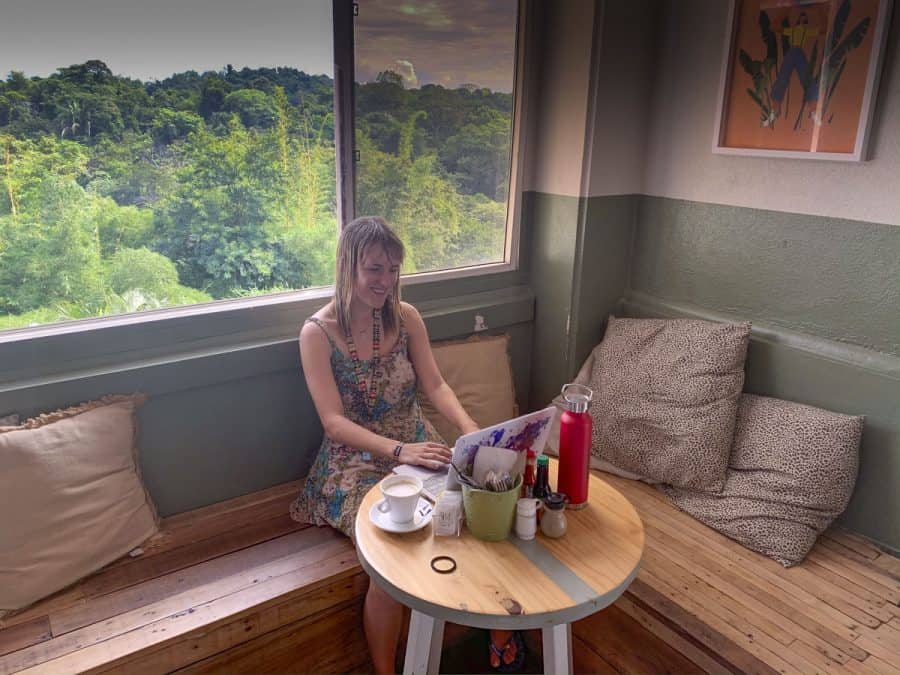
It’s essential to find a comfortable space that allows you to be productive. The great news is with the rise of remote workers who want to travel; there are many great resources made for digital nomads.
Coworking spaces are excellent for maintaining productivity, networking, and finding a sense of community. Research and locate coworking spaces in your destinations to work alongside like-minded individuals.
Coliving chains such as Selina are designed for digital nomads, with dedicated co-working spaces and reliable WiFi connections.
Libraries are also a solid option, as they are quiet and usually have good internet. Lastly, there are cares which are some of my favorite places to work.
20. Prioritize self-care
While it may be tempting to stay in a hostel dorm and eat ramen to save money, this is going to burn you out quickly.
It’s important to take care of yourself on the road and develop some sort of routine that helps you maintain good physical and mental health.
Having a morning routine that I can do anywhere helps keep me balanced. Inspired by the book The Miracle Morning, I take time each day to meditate, journal, read, and exercise. All of this can be done from anywhere in the world.
If you are staying somewhere for a while, you can join a local gym or yoga studio. Plus, one of the perks of working from anywhere is that you can choose destinations with easy access to nature and hiking trails.
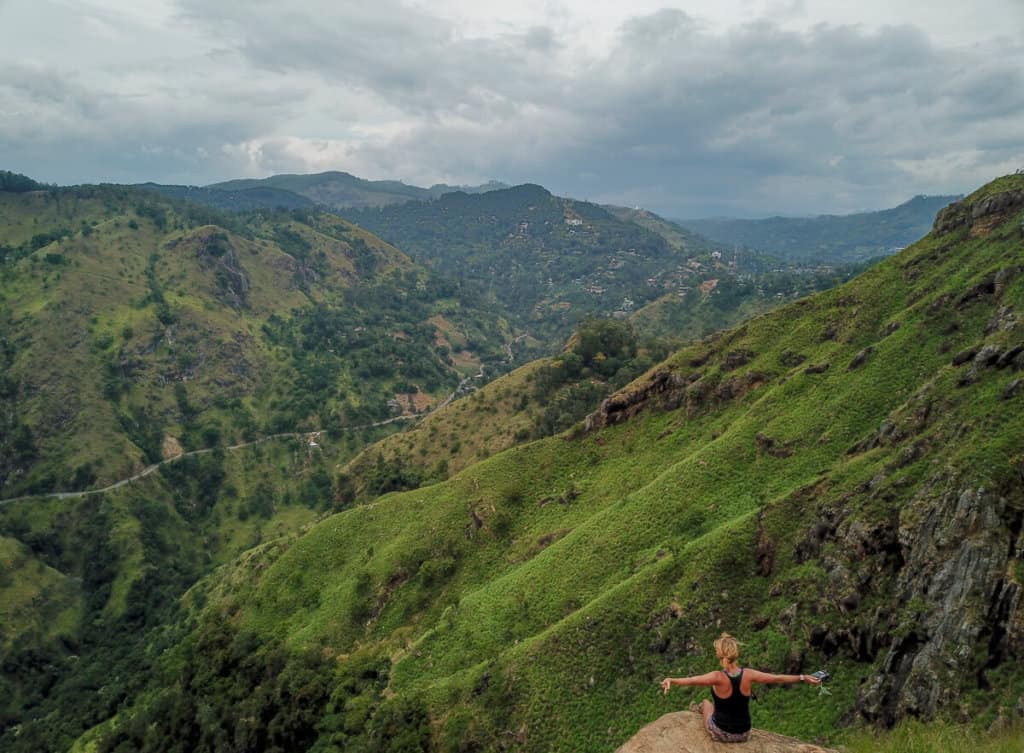
Another key to success as a digital nomad is to maintain a proper diet and sleep pattern. While it can be tempting to eat out all the time, this may not be the healthiest choice.
To avoid this, pick up groceries and cook for yourself like you would at home. Cooking is also an excellent way to save money on the road.
21. Make use of free accommodation
If hostels drive you insane, but you can’t afford a private place, a great option is housesitting. In exchange for watching someone’s home and (usually) pets, you get a free place to stay.
I use TrustedHousesitters, which has led me to stay in beautiful places around the world and save thousands in accommodation costs.
There is a fee to join, but you will make up the cost to join if you get one sit. You can get 25% off your membership using this link!

Another great way to find free accommodation is to join Worldpackers, which lists volunteer opportunities worldwide where you can exchange your skills for accommodation and meals.
At the coliving in Oaxaca City, the volunteers were from Workaway. If you’re just starting your digital nomad journey on a budget, this can be a great resource.
22. Embrace cultural immersion
If you’re living in a foreign country, immerse yourself in the local culture by exploring local cuisines, traditions, festivals, and attractions.
One of my favorite parts about living in Thailand was eating local food at the markets every night and learning about Buddhism.
Engage with the local community, try new activities, and learn about their customs. These enriching new experiences will not only broaden your horizons but also enhance your overall travel adventure.
23. Connect with a digital nomad community

It can be lonely being away from your community of friends and family at home. It’s important to make new connections where you are and find local communities, even if temporary.
While hostels are a great place to meet people, you may find that those travelers aren’t sticking around for as long as you. Meeting new people over and over can become exhausting.
Thankfully, there are many online communities for connecting with digital nomads and ex-pats living in your temporary home.
Facebook groups are an excellent resource for finding them. Just type in the city where you are + digital nomad in the search bar, and you should come across a fitting group.
There are also larger, more general groups, such as Digital Nomad Solo Female Traveler Network, where you can ask for digital nomad advice.
Engage in online communities, attend digital nomad meetups or conferences, and seek opportunities to connect with like-minded individuals.
Connecting with other digital nomads is not just good for your soul but can help you as a new arrival. They will know the best information about getting an apartment and spaces for working.
Having a supportive network can provide encouragement, inspiration, and a sense of belonging, making your digital nomad lifestyle more fulfilling and enjoyable.
This post has more advice on finding digital nomad communities.
24. Get nomad travel insurance
Another essential digital nomad tip is to prioritize your well-being by obtaining comprehensive travel medical insurance.
Ensure it covers medical emergencies, travel disruptions, and equipment protection tailored to your digital nomad lifestyle.
I use and love Safetywing, which is insurance designed for digital nomads. It works on a subscription-based service, so you can just set it and forget it. And yes, I have claimed with them successfully.
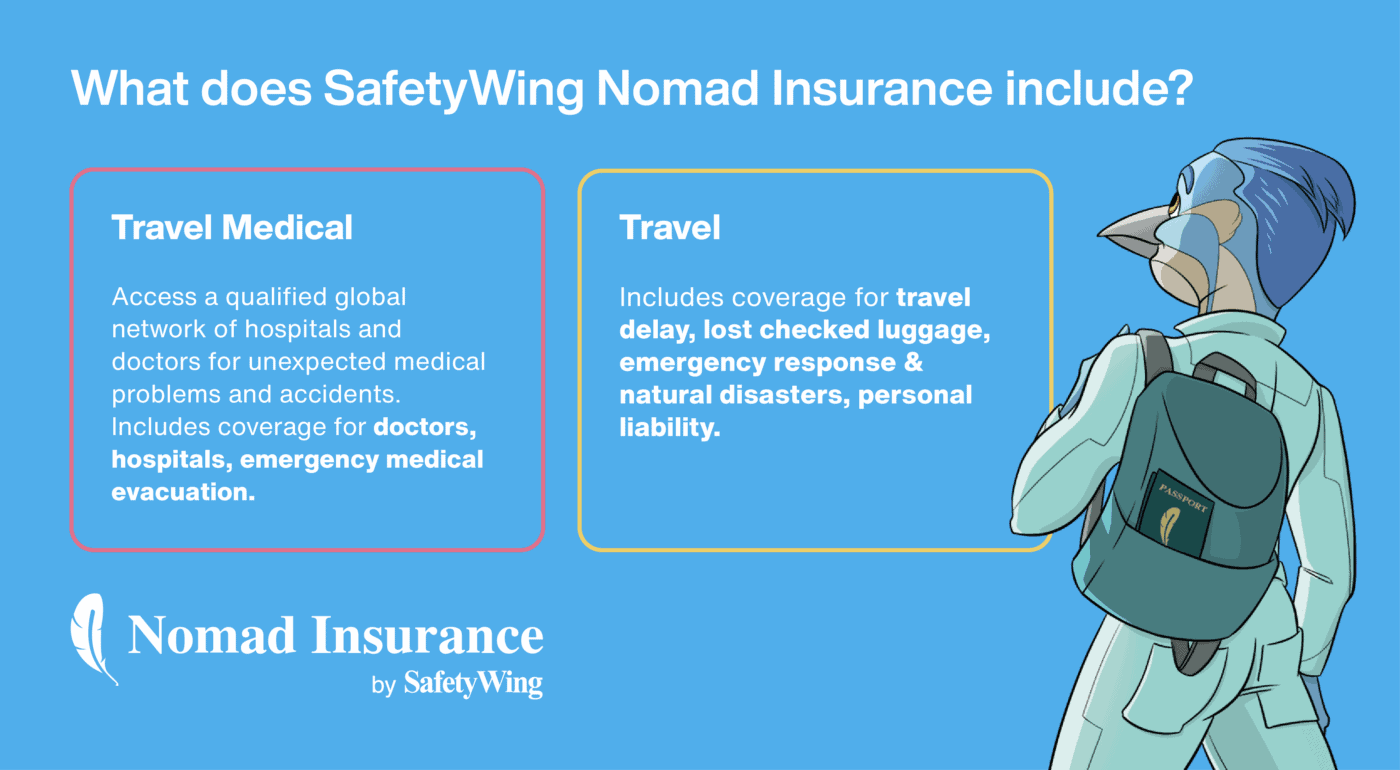
25. Never stop learning
As a digital nomad, staying relevant and adaptable in the ever-changing landscape of remote work is crucial. Dedicate time to expand your skill set, explore new technologies, and stay updated with industry trends.
Traveling as a digital nomad provides unique opportunities to learn new skills and expand your horizons.
Embrace the diverse cultures, traditions, and experiences of the places you visit, and use them as a platform for personal and professional growth.
Take part in local workshops or classes to learn cooking, dancing, or crafts.
Living as a digital nomad can be a transformative journey that not only enhances your work-life balance but also broadens your skill set and enriches your overall perspective on life.
Frequently Asked Questions: Digital Nomad Tips
How can I be a successful digital nomad?
To be a successful digital nomad, it’s important to have a reliable source of income, maintain a disciplined work routine, prioritize effective time management, and continuously adapt to new environments and challenges.
Is 30 too old to be a digital nomad?
Age is not a barrier to becoming a digital nomad. People of all ages can embrace the digital nomad lifestyle and enjoy its benefits. I am 34 and love living as a digital nomad.
What should every digital nomad have?
Essential items for every digital nomad include a reliable laptop, stable internet connection, appropriate travel gear, travel insurance, backup storage for important files, and a sense of adventure!
Is it hard being a digital nomad?
Being a digital nomad comes with its own set of challenges, such as managing work-life balance, dealing with uncertain schedules, and adapting to different cultures and time zones. However, with proper planning and flexibility, it is a rewarding and fulfilling lifestyle.
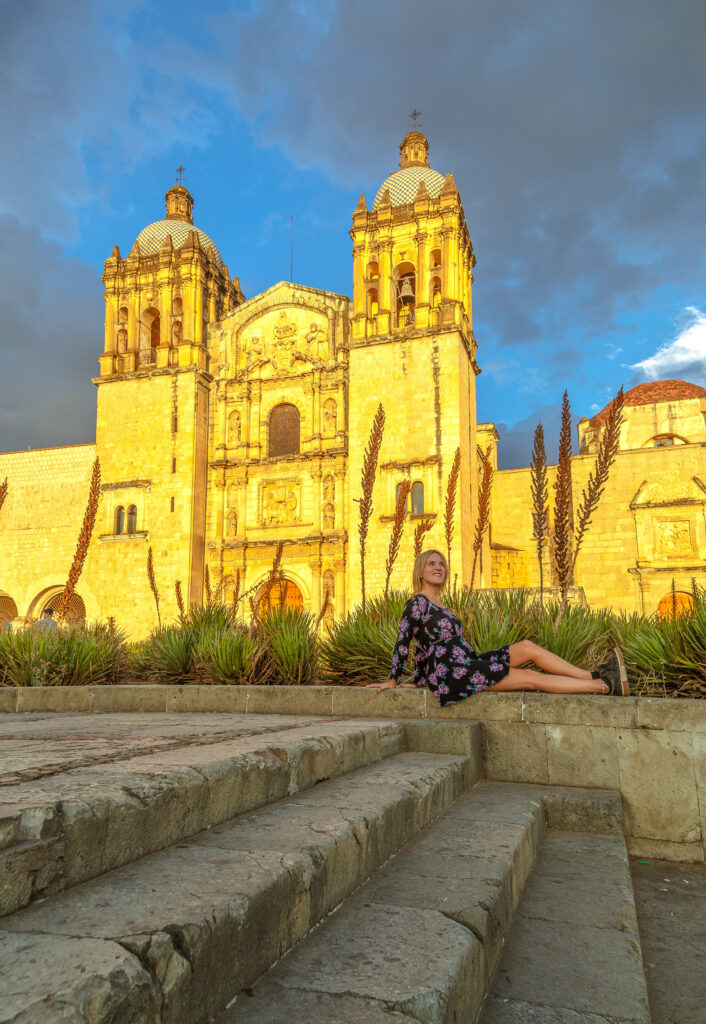
Are digital nomads wealthy?
While some digital nomads may have successful businesses or high-paying jobs, the financial situation of digital nomads varies widely.
It depends, but many digital nomads live great lifestyles because they choose to live in affordable countries while earning money from their home country.
Is it too late to become a digital nomad?
It is never too late to become a digital nomad! People can transition to the digital nomad lifestyle at any stage of their lives as long as they have the necessary skills, motivation, and resources.
Do digital nomads get lonely?
Digital nomads can sometimes experience feelings of loneliness due to frequent travel and being away from familiar social circles (it happens to me often).
However, you can combat loneliness by joining digital nomad communities, participating in co-working spaces, and engaging in social activities.
How much do digital nomads make?
The income of digital nomads varies widely based on factors such as their profession, experience, and location.
What are some tips for maintaining a healthy lifestyle as a digital nomad?
Tips for digital nomads to maintain a healthy lifestyle include prioritizing regular exercise, eating balanced meals, getting sufficient sleep, finding ways to manage stress, and establishing a consistent work-life balance. Spending time outdoors is important!
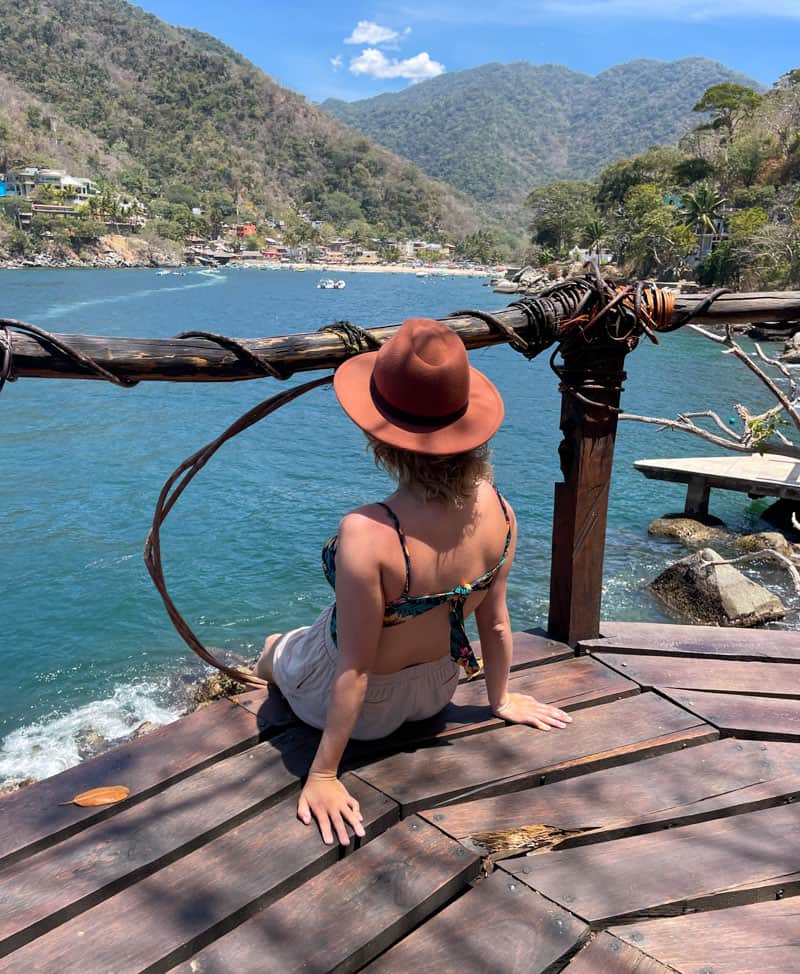
Is the digital nomad thing just a fad?
The digital nomad lifestyle has gained significant popularity in recent years, but it is more than just a passing trend. As remote work opportunities continue to grow, the digital nomad lifestyle is becoming a viable long-term choice for many individuals like myself.
What is the best job for a digital nomad?
The best job for a digital nomad depends on individual skills, interests, and market demands. Common digital nomad-friendly professions include freelance writing, web development, graphic design, online marketing, virtual assistance, and consulting. This post has more on good freelance jobs for beginners.
Final thoughts: Digital nomad tips
I hope you found these digital nomad tips helpful!
Being a digital nomad is a great way to see the world while still working, but don’t be surprised if there’s an adjustment period.
You can’t expect to jump from one lifestyle to the next without a few bumps in the road. It’s going to take time to figure out the flow that works best for you!
Give yourself three months to get past the learning care and be gentle with yourself.
You’ve made a fantastic life choice – there’s not a day that goes by I regret jumping into the nomadic lifestyle.
Are you looking for more digital nomad inspo?
- Ultimate List of Digital Nomad Resources
- 45 Helpful Apps For Digital Nomads
- 30 Digital Nomad Pros and Cons


Leave a comment